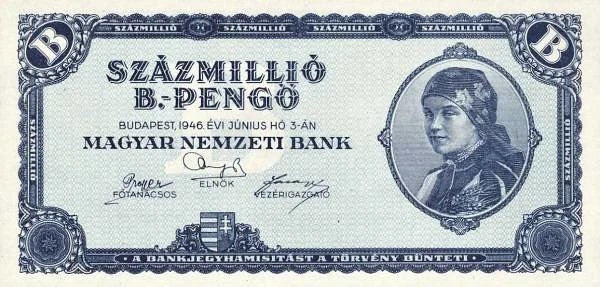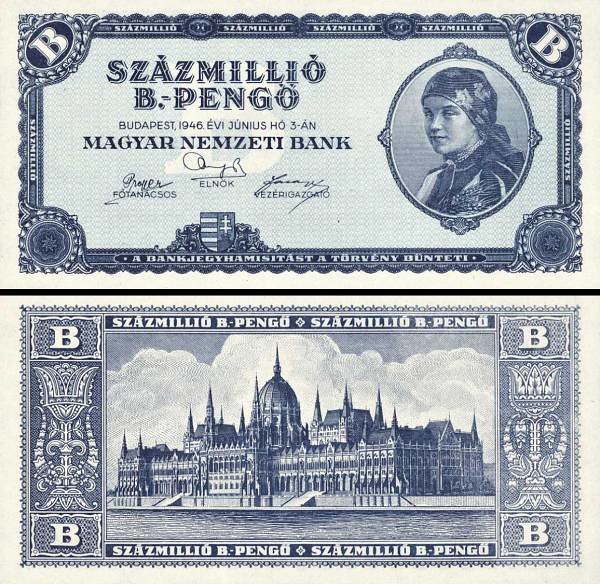World’s highest denomination banknote is Hungarian: it’s worth a small fortune

The world’s highest denomination banknote is the 100 million trillion Hungarian pengő, a product of the hyperinflation following WWII in Hungary. Before the introduction of the forint, Hungary used the pengő. The name came from the Hungarian “peng” verb (English twang) because it was based on silver instead of gold. And gold jingles while silver twangles.
Pengő was a popular Hungarian currency introduced after WWI with the help of Western loans. It replaced the korona devalued after the inflation of 1918-1919-1920. The life span of the money was short, we used it only between 1927 and 1946. However, it went through the world’s biggest hyperinflation, resulting in incomprehensible denominations. When the Hungarian government introduced the forint, 1 forint equalled 400,000 septillion pengő. The result was that nobody changed pengő to forint, so scavengers swept pengő banknotes on the Hungarian streets.
The highest hyperinflation in the world meant that the Hungarian currency lost 2,900,000,000,000,000,000,000,000,000% (26 zeros) of its value annually. In the worst period of the hyperinflation, in July 1946, prices doubled every 15 hours, origo.hu wrote. As a result, people started to throw out their paper money since it was useless. The crisis hit the urban population the most, so many city people had to embark on trains and buses to barter goods for food in the nearby villages. That is how village people started to acquire radios and other “high-tech” products in the second half of the 1940s for pork meat or some wheat.

One hundred million b.-pengő banknotes are rare and valuable
The name of the currency quickly turned from pengő to milpengő (million “millió” pengő), then b.-pengő (trillion “billió” pengő). If you were used to paying four hundred pengő for an item in September 1945, nine months later, that item would cost you a trillion trillion pengő. The highest denomination was a paper banknote worth one hundred million b.-pengő, introduced on 11 July 1946. It did not last long. The forint replaced the pengő on 1 August 1946.
Therefore, not much one hundred million b.-pengő banknotes went into circulation, so that denomination is rare.
Collectors are willing to give lots of money for these banknotes. Interestingly, there are entire printed sheets containing 35 untouched banknotes. Those are the most valuable items in that regard.
A one hundred million trillion pengő banknote is extremely marketable. It costs HUF 300-500,000 (EUR 770-1,284), depending on its condition. The banknote is popular not only among Hungarian collectors but also among foreigners.
Read also:
- When one bread cost 5.85 billion pengő – the Hungarian hyperinflation – Read our article HERE
- Hungarian forint at 3-month low: no recovery in sight – Details in THIS article
Source:






it worth 2$